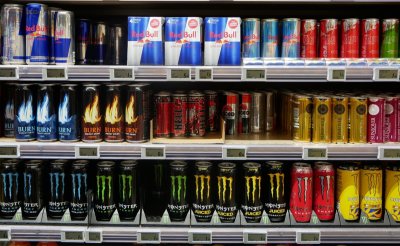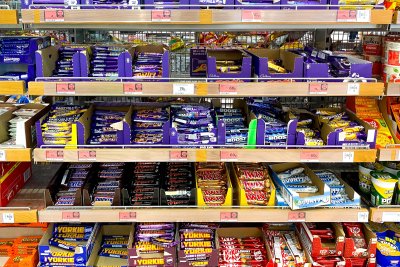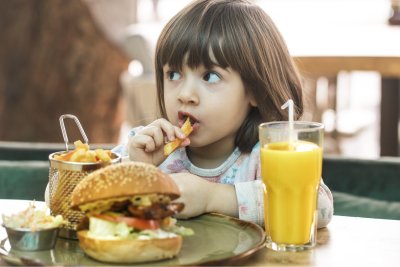News • Children's Food Campaign
Research finds fatal flaw in industry's food labelling scheme
New research by the Children's Food Campaign has shown just how flawed the food industry's 'percent of Guideline Daily Amount (GDA)' labelling scheme is.
Using figures from the Department for Education's Skills for Life survey our researchers found that almost half of all adults (47 percent) lack the numerical skills to use the percentages used in industry's labelling scheme (see note one).
This research helps explain why the Food Standards Agency, when it compared its own 'traffic-light' labelling model against industry's 'percent of GDA' labels, found that:
- 62% of people misunderstood 'percent of GDA' labels. In comparison, only 21% misunderstood the 'traffic light' labels recommended by the Food Standards Agency.
- 42% of consumers said that 'percent of GDA' labels were too complicated.
- 'Percent of GDA' labels took at least 3 seconds longer per item for individuals to interpret.
This research is published as both the food industry and the Food Standards Agency embark on major advertising campaigns to support the competing food labelling systems. Companies, such as Danone, Kellogg's, Kraft, Nestle and PepsiCo have also been heavily lobbying MPs to support the 'percent of GDA' system.
Richard Watts, Co-ordinator of the Children's Food Campaign, said: "The food industry will be aware that their new labels will be useless to almost half of adults. and most children, who simply lack the complex mathematical skills to interpret them. It is no wonder that the public find traffic light food labels simpler and easier to use."
He continued: "I fear industry's system was designed only to give the appearance of action in the face of the current crisis in diet related ill-health, but at the same time, avoid using the red labels that might actually discourage people from eating junk food. Powerful companies, such as Kellogg's, have been vigorously lobbying MPs to support this unclear and unhelpful system which will do nothing to help stop the rise of childhood obesity, but will help to protect their profits".
The Children's Food Campaign will be writing to all MPs and British MEPs with a fact-sheet (download as 64kb PDF), which outlines our findings.
Ends.
For further information please contact Richard Watts on 0203 5596 777 or 07710 782719 (mobile) or richard@sustainweb.org
Notes to editors:
- Our research cross references the DfES Skills for Life Survey (2003) against the Food Standards Agency's 2005 survey into public perceptions of food labelling (conducted by Synovate) and the Edexcel National Standards for Adult Numeracy. It found that almost half (47 percent) of adults did not reach Level 1 numeracy level, which includes the ability to: "use percentages in the context of measures and to make observations".
- The Food Standards Agency launched its 'traffic light' labelling scheme following extensive consumer research. The system rates each product as high (red light), medium (amber light) or low (green light) in the four key nutrients (fat, saturated fat, salt and sugar) allowing consumers to get a simple at-a-glance impression of how healthy a product is. Food manufacturers Danone, Kellogg's, Kraft, Nestle and PepsiCo and retailers Tesco and Morrisons have joined together to promote the 'percent of GDA' labelling scheme. The system tells consumers the percentage of the adult male Guideline Daily Amount of the four key nutrients that each product contains.
- A recent Guardian article (http://business.guardian.co.uk/story/0,,1979228,00.html) reported on the extent to which the food industry has tried to undermine the FSA's easer to understand traffic light labelling model.
- The Children's Food Campaign wants to improve children's health and well-being through better food - and food teaching - in schools, and protecting children from junk food marketing. We are supported by over 300 organisations, almost 300 MPs and 12,000 members of the public. We were behind the ground-breaking Children's Food Bill introduced into Parliament last year. The Children's Food Campaign is coordinated by
Sustain: the alliance for better food and farming.
- The key childhood obesity facts are:
- One in three children is now obese or overweight.
- Obesity in under-11s has risen by over 40% in ten years.
- The International Obesity Task Force estimates that each year in England 220,000 additional children become overweight or obese.
- The Chief Medical Officer has compared the crisis in children's diets to a health 'time bomb' which must be defused.
- The Chair of the Food Standards Agency (FSA) has warned that for the first time in more than a century, life expectancy may fall, with the real prospect that parents may outlive their children. - Happy New Year!
Download the Factsheet as a 64kb PDF
Published Wednesday 3 January 2007
Children's Food Campaign: Better food and food teaching for children in schools, and protection of children from junk food marketing are the aims of Sustain's high-profile Children's Food Campaign. We also want clear food labelling that can be understood by everyone, including children.





